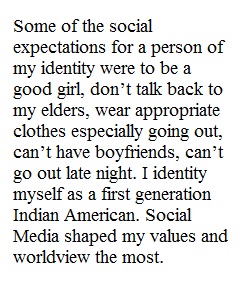


Q The Culture Sketch is part one of the Cultural Autobiography Project. The Culture Sketch activity prompts students to reflect on their unique cultural heritage and to identify cultural identities. The activity will allow students to identify important aspects of various cultural identities and note how they shape them as individual persons and members of various collective groups. This project is meant to be an integrative, reflective activity that focuses on your thoughts and feelings about your personal cultural experiences and that helps you make sense of your cultural experiences. It is not a simple recounting of activities or events, but rather how they have impacted you to inform the person you want to become. Please use the class exercises and discussions to help facilitate your thinking about your own cultural identity. Remember this is a personal reflection assignment, not a research paper; however, if you cite courses, be sure to use APA style. Culture Sketch (20 points) – Students will complete the culture sketch worksheet by editing the word document with the answers to the worksheet. The worksheet requires students to complete three parts:
Q 1. Identifying your cultural influence group. Indicate whether you are in the dominant or nondominant group of each cultural influence. 2. Completing the questions and reflection prompt related to each cultural influence. 3. Completing the constellation questions and reflection prompt related to privilege. 1. Review the ADRESSING Frameworkbelow. Please list which cultural influences and identities that impact your unique cultural experiences.
View Related Questions